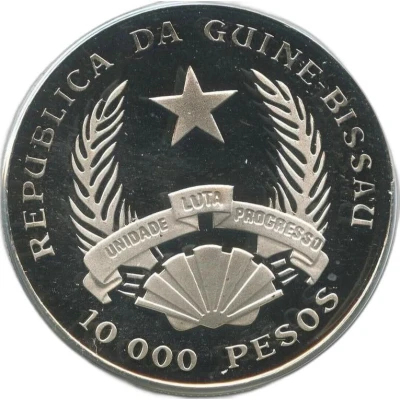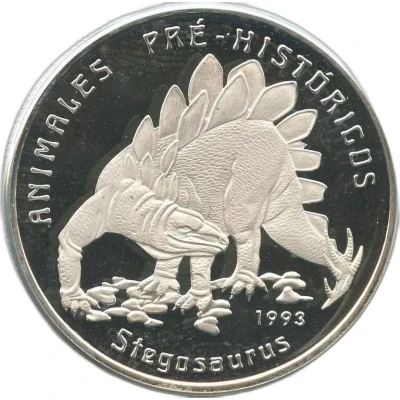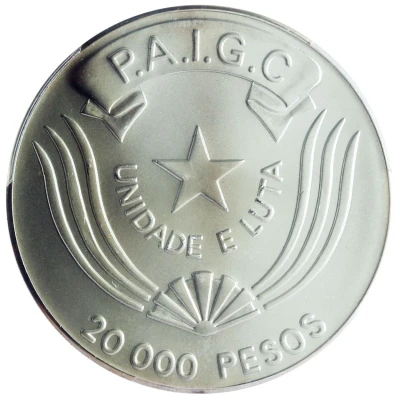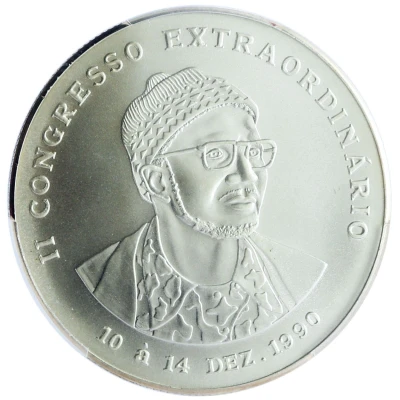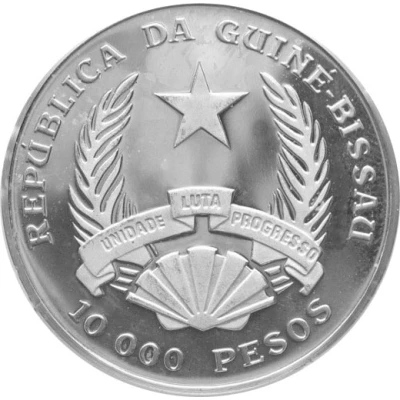
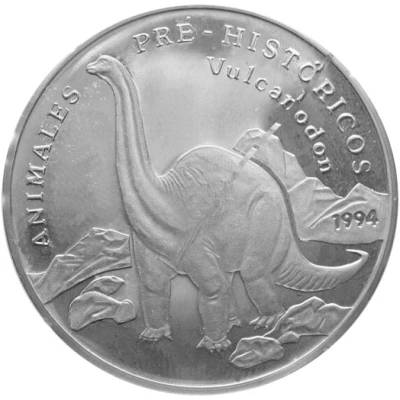

10 000 Pesos Vulcanodon
1994 year| Silver (.999) | 16.10 g | 38 mm |
| Issuer | Guinea-Bissau › Guinea-Bissau (1976-date) |
|---|---|
| Landgrave | Republic (1973-date) |
| Type | Non-circulating coin |
| Year | 1994 |
| Value | 10 000 Pesos (10 000 GWP) |
| Currency | Peso (1975-1997) |
| Composition | Silver (.999) |
| Weight | 16.10 g |
| Diameter | 38 mm |
| Shape | Round |
| Technique | Milled |
| Demonetized | May 1997 |
| Updated | 2024-10-05 |
| Numista | N#101102 |
|---|---|
| Rarity index | 93% |
Reverse
Vulcanodon
Script: Latin
Lettering:
ANIMALES PRÉ HISTÓRICOS
Vulcanodon
1994
Edge
Reeded
Comment
Vulcanodon (meaning "volcano tooth") is an extinct genus of sauropod dinosaur from the Early Jurassic of southern Africa. The name Vulcanodon comes from latin Vulcanus – Roman god of fire; greek odon – "tooth". The only known species is Vulcanodon karibaensis. Discovered in 1969 in Rhodesia (now known as Zimbabwe), it was regarded as the earliest known sauropod for decades, and is still one of the most primitive sauropods that has been discovered. In 2010, Gregory S. Paul estimated its length at eleven metres, its weight at 3.5 tonnes. Vulcanodon is known only from a single locality on an island in Lake Kariba, the largest artificial lake in the world, in northern Zimbabwe (formerly Rhodesia).Interesting fact
The 10,000 Pesos (Vulcanodon) coin from Guinea-Bissau is a unique coin that features a Vulcanodon, a prehistoric mammal that lived during the Miocene epoch, on its obverse side. The coin's design is based on a fossil discovery made in Guinea-Bissau in the 1970s, and it's considered a rare and valuable collector's item among numismatists and paleontology enthusiasts.
Price
| Date | Mintage | VG | F | VF | XF | AU | UNC |
|---|---|---|---|---|---|---|---|
| 1994 | 10000 | - | - | - | - | - | - |
Values in the table are based on evaluations by sales realized on Internet platforms. They serve as an indication only for 10 000 Pesos (Vulcanodon) 1994 coin.
